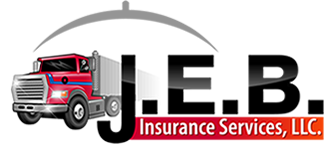The Department of Transportation works hard to ensure that Texas roads and all roads across America are as safe and efficient as possible. One of the ways they do this is by requiring drivers of commercial trucks that weigh more than 10,000 pounds to follow specific safety standards. To ensure these standards are being met, truckers are put through an inspection. Unfortunately, these roadside inspections are not the highlight of a trucker’s day. Part of the dread connected to these inspections is when they happen — which is usually when drivers least expect it!
What Is a DOT Inspection?
As mentioned, any commercial motor vehicle that weighs more than 10,000 pounds must pass a yearly DOT inspection. When you are stopped for an inspection, your truck will be checked by a DOT inspector or a state police officer. This inspection, which consists of six different inspection levels, is necessary to ensure these vehicles are safe to operate on the roads and comply with safety regulations.
During the inspection, the inspector or police officer will look at different components of the commercial truck and trailer, if there is one attached that meets the weight requirements for an inspection. Inspectors will look for any mechanical issues or other defects that could lead to a traffic accident or injury. The inspector or officer will also ensure the commercial truck complies with federal regulations as it relates to the presence of any hazardous materials and the securement of any goods that are being transported.
Levels of a DOT Inspection
You will never know which level the inspector will have you under until you’ve been stopped, so it’s important to familiarize yourself with each type of inspection:
Level I: North American Standard Inspection
Level I is the most comprehensive inspection level. If you go through this type of inspection, your documents — including license, hours of service, motor carrier registration, and shipping papers — will all be checked. Certain components (brakes, cargo securement, lighting devices, steering, tires, and more) of your truck will also be inspected.
Level II: Walk-Around Driver/Vehicle Inspection
The Level II inspection is similar to a Level I inspection, but one of the major differences you will discover during this inspection is that the inspector will not physically go underneath your commercial truck to inspect it.
Level III: Driver-Only Inspection
As the name implies, a Level III inspection will focus solely on you, the driver. This inspection may take 20 minutes or less, and you will be checked for the following:
- Driver’s License
- Medical examiner’s certification
- Skill Performance Evaluation (SPE) documentation
- Records of hours worked
- Vehicle Inspection Report(s)
- Carrier Identification and Status
- Compliance with seat belt regulations
- Adherence to alcohol and/or drug policies
Be sure to keep all of your paperwork updated!
Level IV: Special Inspection
These inspections are typically one-time examinations that are conducted as a response to a specific issue or incident. They are meant to validate or refute a claim or suspected trend. The length of time this inspection takes cannot be estimated because the item(s) being checked varies.
Level V: Vehicle-Only Inspection
This inspection involves checking the truck without your presence. It includes all the checks in a Level I inspection and can be done at any location. This type of inspection can take up to 30 minutes.
Level VI: Enhanced NAS Inspection for Radioactive Shipments
The last level is a special type of inspection designed for select radiological shipments. At this level, drivers can expect enhanced checks on radiological shipments and enhanced out-of-service criteria for things like package integrity. Your truck, the cargo, and you(the driver) must be problem-free before you can leave for delivery. By understanding DOT inspections, you can make sure you are doing everything you can to keep your commercial truck in compliance and pass inspections so that your insurance premiums remain low.
If you would like more information on DOT inspections and how a failed inspection could impact your commercial truck insurance, please do not hesitate to connect with us today.


